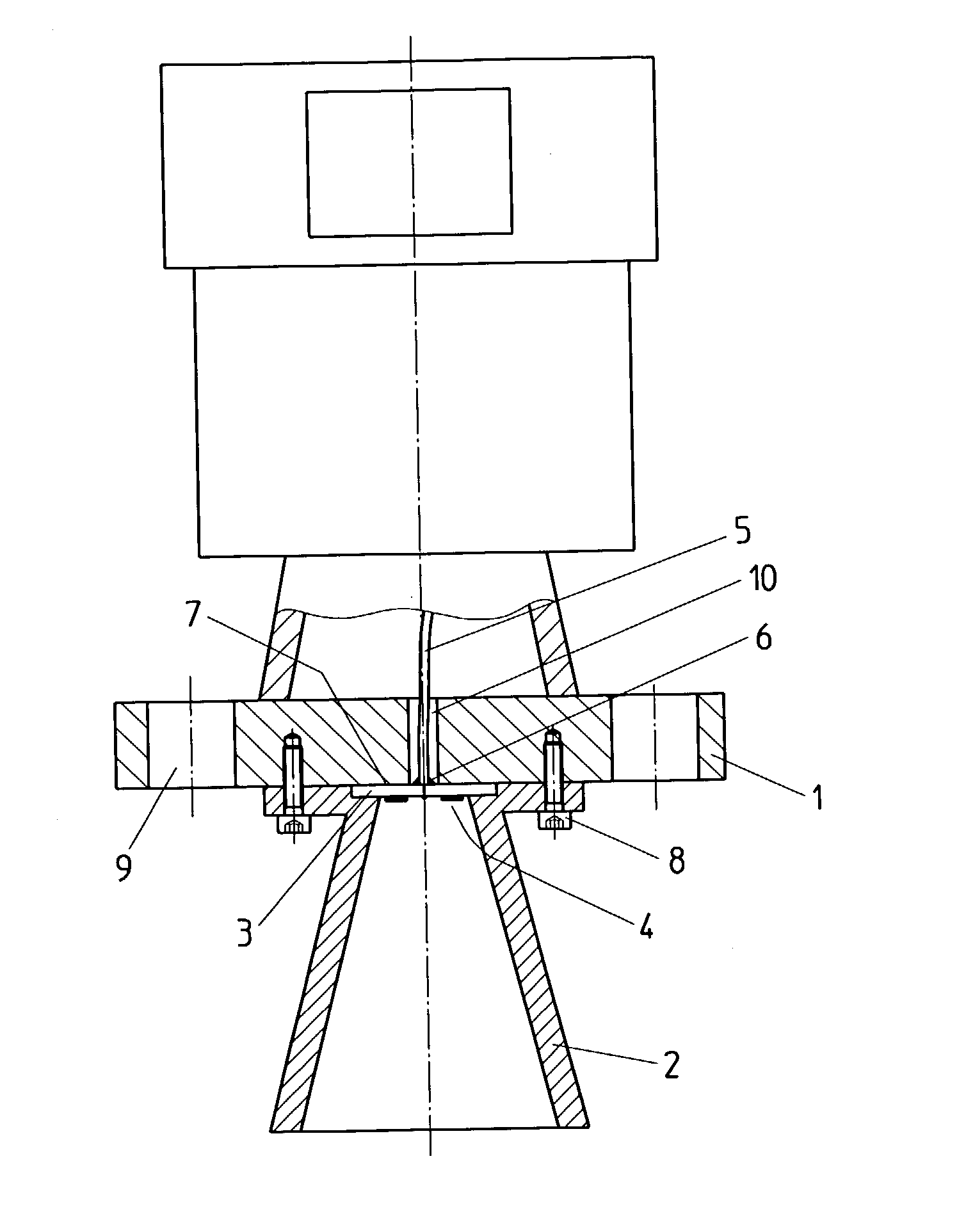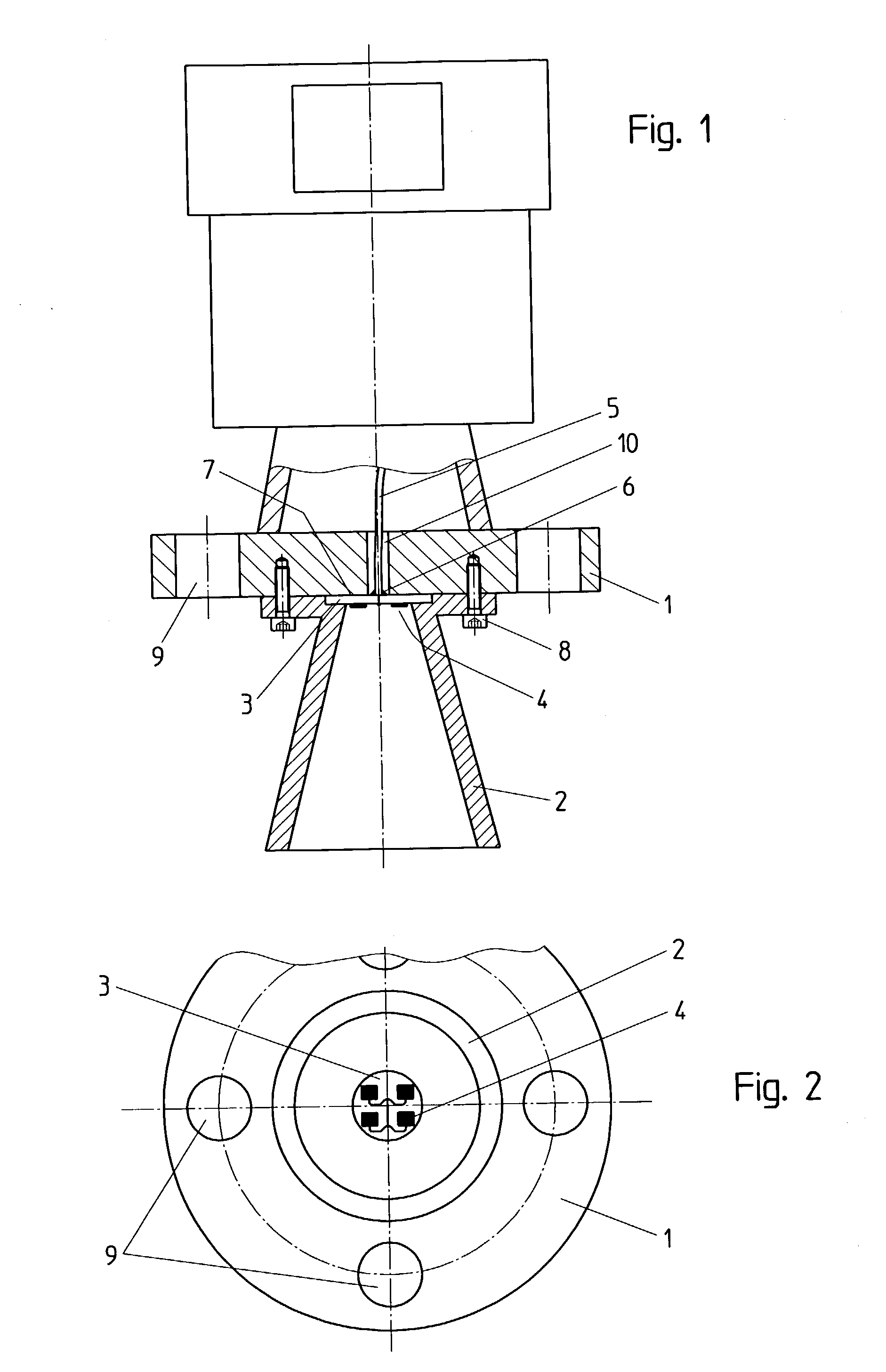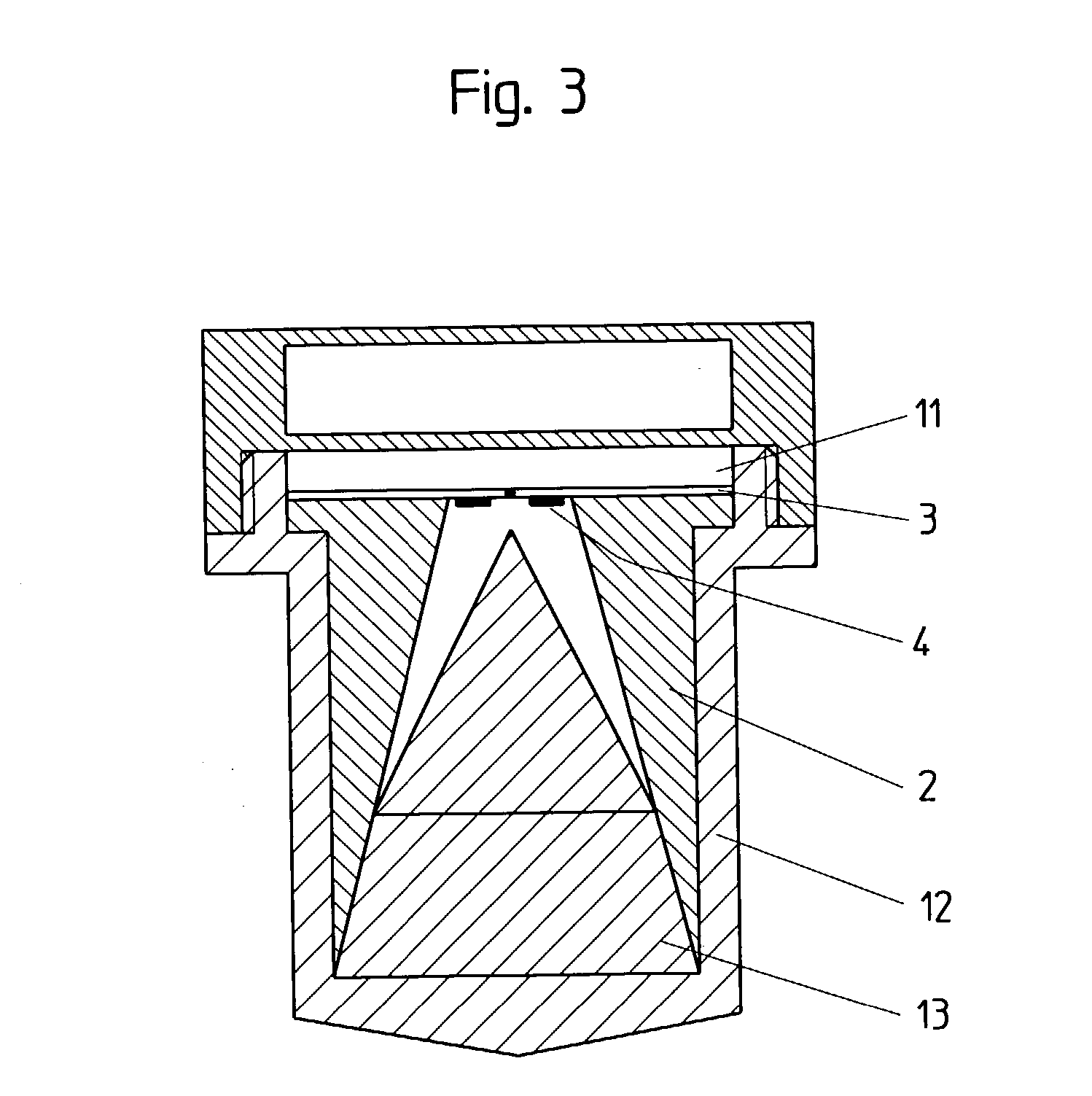[0011] Thus, in an inventive antenna system according to one of the above mentioned aspects of the invention, a waveguide is for the first time dispensed of, into which
microwave signals have been coupled to date, whereby the longitudinal extension of the antenna system can be reduced. Instead of the waveguide for example a
coaxial cable my be connected to the planar structure with for example the at least one patch on it to conduct
microwave signals (e.g. microwave pulses) from a microwave unit of the radar sensor generating
microwave signals to the antenna system according to the present invention such that microwaves are emitted in the direction of a product of which the level has to be measured. One
advantage of the present invention may be that the antenna system is more compact and is small enough to be used even under very constricted space conditions.
[0012] Such as has already been described, it might has been common usage to couple microwaves--either by means of an
exciter pin or using patches--into a waveguide followed by an antenna horn. This
coupling into a waveguide originally was necessary in a construction-contingent manner due to the lateral arrangement of the
exciter pin. With the further development of this system using, instead of the
exciter pin, planar structures for
coupling in the microwaves, the principle of
coupling into a waveguide was maintained, since the experts thought that this would be necessary for a perfect function of the system.
[0013] The combination of a waveguide and an antenna horn, however, required an important component extension in the longitudinal direction. Surprisingly, it was found after conducting extensive tests that it is possible to couple HF energy in the form of microwaves by means of a planar structure (patch) directly into an antenna horn, e.g. in the zone of the horn flaring. According to an exemplary embodiment of the present invention planar structures with two or four, may even more rectangular patches optimized for a frequency of 26 GHz have turned out to be particularly suited. The hereby used patches can also have any other shapes, such as, for example, triangular, oval or circular shapes. For enabling a
direct coupling, the patches may be arranged directly at the antenna horn front end. Through this
direct coupling into the antenna horn, the constructional length of the antenna system is reduced by up to 60% as compared to conventional systems. The length of a prior art 2" antenna with a waveguide at a frequency of 26 GHz, for example, is about 160 mm, whereas the configuration of the novel claimed features is only 65 mm at comparable
electric properties.
[0014] Antennas are often used in chemically aggressive environmental conditions or in the
food sector. For protecting the patches from a possible chemical action or from getting dirtied by foodstuffs, inventive antenna systems are preferably filled completely or in part with a
dielectric material. This filling with a
dielectric material (e.g. PP, PVDF, PTFE,
ceramic or mixtures thereof) having a
dielectric constant of .epsilon..sub.2.gtoreq.1, apart from the protection from a chemical action and a dirtying of the patch, has also a mechanically
abrasive protective effect, which can be very useful with certain filling products. Moreover, it is to be stated here that by filling the horn antennas with a dielectric material, the condensate is at the same time prevented from penetrating into the inner antenna space.
[0015] Filling the antenna with a dielectric material, however, serves a completely different purpose: apart from the purely protective effect resulting for the antenna, the use of such a filling allows for further reducing the size of the antenna system in that the
radiation surface of the filling is given the form of an optical lens or a cone, whereby the
wave propagation angle can be reduced. This corresponds simultaneously to the achievement of a higher
gain of an inventive antenna system as compared to a conventional antenna having altogether the same properties. Apart from the plain
advantage of achieving a higher
gain, the use of a dielectric filling medium thus allows for the
size reduction of the antenna: By the fact that due to the lens or cone form of the filling medium the
wave propagation angle is reduced and the wave
signal is therewith less scattered than it is usual with patch antennas, the number of the necessary patches can be reduced for achieving a determined predefined
gain. This, however, in turn entails a reduction in the antenna size--above all in the
diameter thereof.
[0016] Thus, by focussing the free-space wave coupled in by the patches effected by the antenna horn and the dielectric material present in the antenna horn, the reduction of the number of patches required for achieving a certain gain may be possible. Preferably, four separate patches are used, which are electrically coupled to each other. Hence, it is likewise possible to use only one, two, or more than four patches.
 Login to View More
Login to View More  Login to View More
Login to View More 


